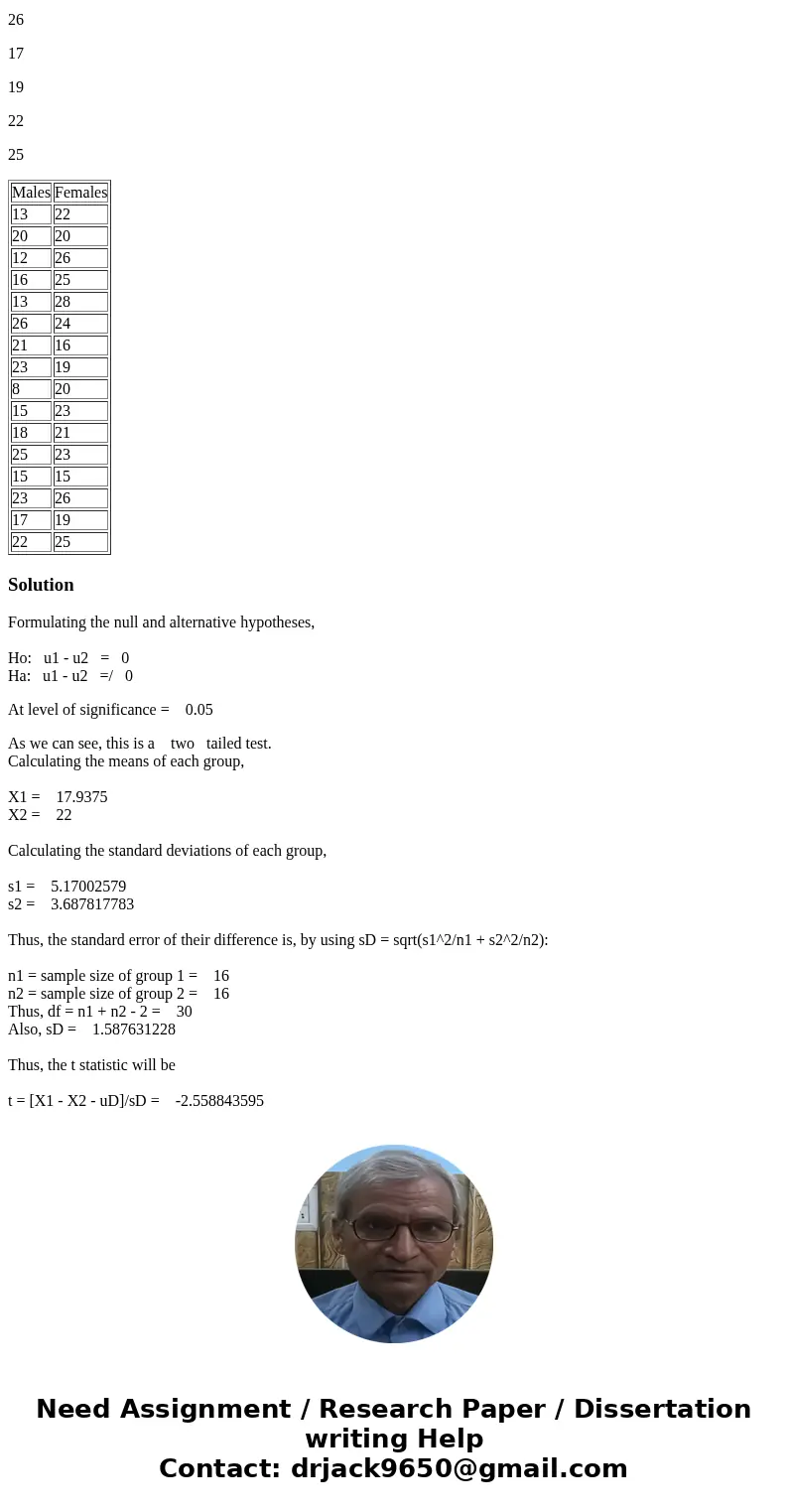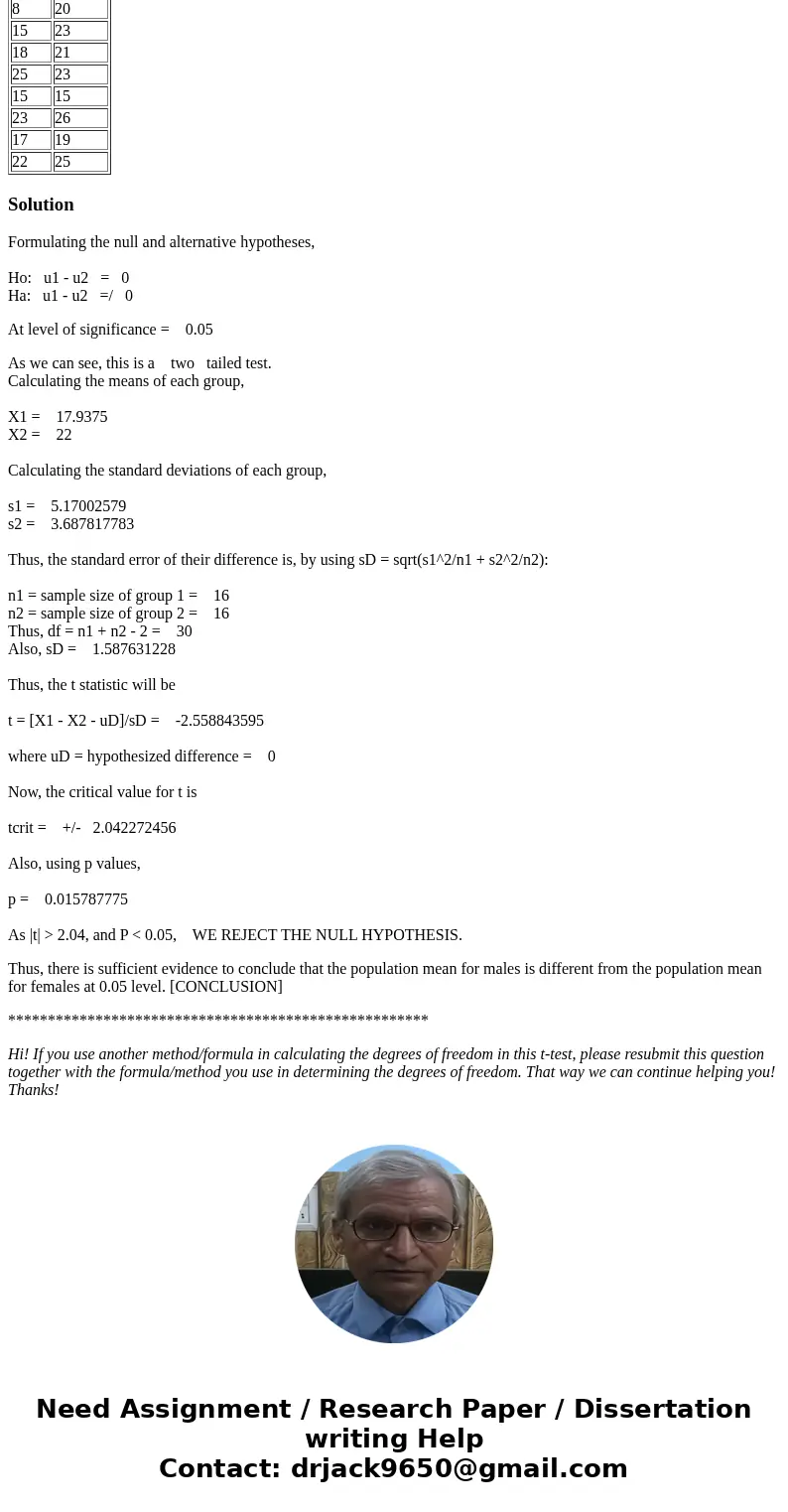what is the rejection region for The Interpersonal Reactivit
what is the rejection region for
The Interpersonal Reactivity Index is a survey designed to assess four different types of empathy. One type of empathy, called Empathetic Concern, measures the tendency to feel sympathy and compassion for people who are less fortunate. The index ranges from 0 (less empathetic) to 28 (more empathetic). The following data, representing random samples of 16 males and 16 females, are consistent with results reported in psychological studies. Do the data provide sufficient evidence to conclude that the population mean for males is different from the population mean for females. Use a=.05.
Males
Females
13
22
20
20
12
26
16
25
13
28
26
24
21
16
23
19
8
20
15
23
18
21
25
23
15
15
23
26
17
19
22
25
| Males | Females |
| 13 | 22 |
| 20 | 20 |
| 12 | 26 |
| 16 | 25 |
| 13 | 28 |
| 26 | 24 |
| 21 | 16 |
| 23 | 19 |
| 8 | 20 |
| 15 | 23 |
| 18 | 21 |
| 25 | 23 |
| 15 | 15 |
| 23 | 26 |
| 17 | 19 |
| 22 | 25 |
Solution
Formulating the null and alternative hypotheses,
Ho: u1 - u2 = 0
Ha: u1 - u2 =/ 0
At level of significance = 0.05
As we can see, this is a two tailed test.
Calculating the means of each group,
X1 = 17.9375
X2 = 22
Calculating the standard deviations of each group,
s1 = 5.17002579
s2 = 3.687817783
Thus, the standard error of their difference is, by using sD = sqrt(s1^2/n1 + s2^2/n2):
n1 = sample size of group 1 = 16
n2 = sample size of group 2 = 16
Thus, df = n1 + n2 - 2 = 30
Also, sD = 1.587631228
Thus, the t statistic will be
t = [X1 - X2 - uD]/sD = -2.558843595
where uD = hypothesized difference = 0
Now, the critical value for t is
tcrit = +/- 2.042272456
Also, using p values,
p = 0.015787775
As |t| > 2.04, and P < 0.05, WE REJECT THE NULL HYPOTHESIS.
Thus, there is sufficient evidence to conclude that the population mean for males is different from the population mean for females at 0.05 level. [CONCLUSION]
*****************************************************
Hi! If you use another method/formula in calculating the degrees of freedom in this t-test, please resubmit this question together with the formula/method you use in determining the degrees of freedom. That way we can continue helping you! Thanks!



 Homework Sourse
Homework Sourse